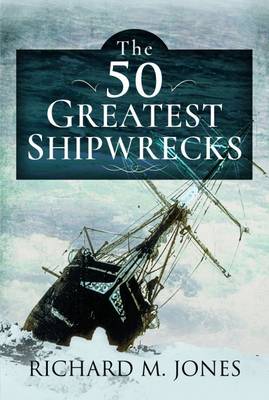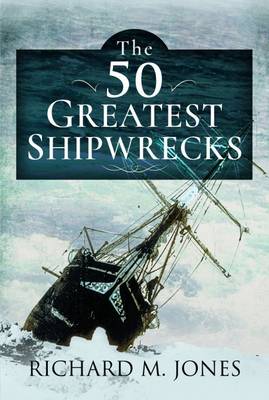
- Afhalen na 1 uur in een winkel met voorraad
- Gratis thuislevering in België vanaf € 30
- Ruim aanbod met 7 miljoen producten
- Afhalen na 1 uur in een winkel met voorraad
- Gratis thuislevering in België vanaf € 30
- Ruim aanbod met 7 miljoen producten
Zoeken
Omschrijving
When you think of a shipwreck, what image springs to mind? A tall sailing ship on the rocks, or perhaps the sinking Titanic surrounded by lifeboats? Historian Richard M. Jones has put together 50 stories of lost ships throughout history that are among the most important, infamous and in some cases tragic ships in the whole of history.
When did two liners collide and lead to one of the greatest rescues in history?
How did a Scotsman become an American hero against his own country?
Which warship sank with gold bullion on board during the Second World War?
This book tells the story of these fascinating cases plus many more, explores the largest shipwrecks, the treasure wrecks and the ones that are talked about still as the most famous. Starting at the tiny island of Alderney in 1592, we take a journey through history, through the First and Second World Wars, into the age of the passenger ferry and finally to the modern day migrant issues in the Mediterranean Sea.
Never before have these fifty wrecks come together in a book that really brings home to the reader just how many lost vessels there are, how deadly many can be and what this teaches us today about our own history.
When did two liners collide and lead to one of the greatest rescues in history?
How did a Scotsman become an American hero against his own country?
Which warship sank with gold bullion on board during the Second World War?
This book tells the story of these fascinating cases plus many more, explores the largest shipwrecks, the treasure wrecks and the ones that are talked about still as the most famous. Starting at the tiny island of Alderney in 1592, we take a journey through history, through the First and Second World Wars, into the age of the passenger ferry and finally to the modern day migrant issues in the Mediterranean Sea.
Never before have these fifty wrecks come together in a book that really brings home to the reader just how many lost vessels there are, how deadly many can be and what this teaches us today about our own history.
Specificaties
Betrokkenen
- Auteur(s):
- Uitgeverij:
Inhoud
- Aantal bladzijden:
- 168
- Taal:
- Engels
Eigenschappen
- Productcode (EAN):
- 9781399008044
- Verschijningsdatum:
- 21/08/2025
- Uitvoering:
- Paperback
- Formaat:
- Trade paperback (VS)
- Afmetingen:
- 159 mm x 235 mm
- Gewicht:
- 258 g

Alleen bij Standaard Boekhandel
+ 44 punten op je klantenkaart van Standaard Boekhandel
Beoordelingen
We publiceren alleen reviews die voldoen aan de voorwaarden voor reviews. Bekijk onze voorwaarden voor reviews.








